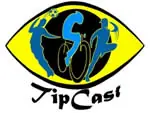In the arena of sports performance, few topics are as common or carry such a wide range of theories as cramping. One of the most common theories proposed is that salt depletion or dehydration, which are said to contract the fluid space around muscles, alter ion channels and ultimately invoke involuntary spasms.
Other common theories include electrolyte depletion, like magnesium, glycogen/glucose depletion, temperature extremes and even lack of stretching or flexibility. However, recent research has begun to unravel some of the mysteries behind exercise-associated muscle cramps (EAMC) with a novel hypothesis.

Short on time?
Listen to highlights in the Exercise-Induced Cramps Tipcast
From Mariners to Marathoners
The most common explanation is that high sweat rates and loss of salt during strenuous activity are linked to muscle cramps. Similar reports come from the stokers of ships to miners and the builders of the Hoover Dam (Eichner, 2007).
It is not surprising that one would draw such a conclusion, but digging into the research shows that not a single study has been published showing that sweat sodium concentrations differ between those suffering from EAMC and non-crampers (Schwellnus, 2009). For instance, data among tennis players seems to support the link between salt loss, but sodium concentrations were not measured during periods of acute cramping, nor were controls used for comparison.
In an attempt to address the limitations of other studies, Schwellnus et. al. (2004) studied a group of 72 runners competing at a running event lasting more than 5 hrs held under near ideal conditions (temperature ranged from 58o -- 75o F) and found that neither serum electrolyte nor hydration changes differed athletes who cramped and those who did not.
Certainly, if we purposefully deplete someone of sodium we can induce whole body cramping (Schwellnus, 2007), but there is no evidence that depletion of other electrolytes (like potassium, calcium, or magnesium) are lost in appreciable amounts, and thus do not play a role in cramping (Eichner, 2007). Likewise, severe dehydration, may also induce cramping, but neither of the above explains the most common form of EAMC that occur in localized muscle groups during anything but hot, dehydrating conditions.
Indeed, my own personal experience has shown me that environmental conditions rarely seem to match up with cramping or their severity; my two most excruciating bouts of cramping occurred under conditions I would consider either pleasant or in one case cool. The one common thread I've found with cramps is intensity.
The Intensity Factor
In a recent review, Schwellnus (2009) drew upon available data to expand upon his earlier "muscle fatigue" hypothesis for EAMC, whereby fatigue itself causes an abnormal neuromuscular response to fatiguing exercise; fatigue disrupts the balance between neural input and feedback to the system causing too much excitation of the muscle and not enough inhibition. Without that balance, a simple contraction overshoots what is needed leading to a cramp. Schwellnus' hypothesis is further supported by the fact that stretching is the most effective means of relieving cramps because it increases the inhibitory input into the muscles. My own experiences, as well as those of clients has shown this to be the case early in the competition season, when "race" intensity is limited, or in an event that exceeds your typical training or competition regiment.
For example, many century riders will focus on distance and speed, but fail to account for the affect multiple hills can have in an upcoming century or even metric century. Likewise, many 5 and 10 k runners will cramp in hilly road or trail events. Most recently, one of my elite level clients went into a long, hilly road race after racing nothing but 1-2 hr criteriums. He ultimately cramped badly, forcing him to drop off from the leaders to finish 6th, but further highlighting the impact acute "overload" has on performance.
As we can see, sometimes you can prepare for an event and reduce your likelihood of cramping by simply structuring more event specific intensity, like performing hard intervals at the end of a long endurance ride or run, rather than when you're fresh. But what if you have an event in the next week, what then? One useful preventative measure that I've found comes from British Cycling coach Dave Smith, Tonic Water! The quinine in the tonic water may no longer treat malaria, but it does act as a mild muscle relaxant. I have found that 1 liter per day, two to three days prior to your event and a half a liter the day is usually effective, but as with any supplement, try before a minor competition first.


